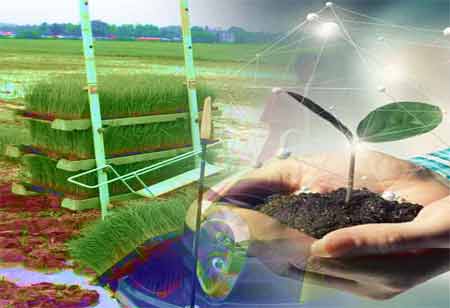THANK YOU FOR SUBSCRIBING
Be first to read the latest tech news, Industry Leader's Insights, and CIO interviews of medium and large enterprises exclusively from Food and Beverage Tech Review
The Impact of the Internet of Things on the Food Industry
The network of devices that collects and transmits data via the Internet is the Internet of Things, or IoT.

By
Food and Beverages Tech Review | Monday, March 25, 2024
Stay ahead of the industry with exclusive feature stories on the top companies, expert insights and the latest news delivered straight to your inbox. Subscribe today.
The food sector is going through some significant changes as a result of the expansion and availability of Internet of Things (IoT) solutions and services, especially regarding trends in food safety. Using IoT technology, food manufacturing companies can maintain the highest quality standards while guaranteeing a consistent, superior product at all times and locations.
Fremont, CA: The network of devices that collects and transmits data via the Internet is the Internet of Things, or IoT. The food business is gradually acquainting itself with the Internet of Things. Food suppliers, processors, and retailers are finding excellent prospects for operational and financial growth in their food operations because of the many unique applications of the Internet of Things. It has dramatically improved every functional area in the food business. For example, IoT enables food firms to guarantee enhanced food safety, traceability, and accountability throughout the supply chain operations from farm to plate. Additionally, the food supply chain's IoT network significantly helps reduce waste, expenses, and hazards at every process step.
In addition, there is a long list of other advantages that IoT technology offers the food business; as a result, the impact is also very remarkable.
Enhanced Food Safety:
The Internet of Things (IoT) has played a vital role in reducing the risk of food-related diseases. Various sensors are used to monitor essential factors such as production conditions, delivery schedules, and temperature. Real-time temperature monitoring sensors are used to keep track of critical food safety parameters. This ensures that cold chain management is efficient and effective.
Using IoT technology, the supply chain can comply with national, international, and local laws. Automated Hazard Analysis and Critical Control Points (HACCP) checklists are used throughout the manufacturing, production, and transportation stages. This provides consistent and valuable data to businesses that helps them implement effective food safety solutions.
Logistics:
GPS technology and Radio Frequency Identification (RFID) transmitters enable tracking of the distribution chain effectively during the entire storage and shipping process at the sales locations or stores. Additionally, this helps businesses better understand consumer preferences, respond to market demands, and reduce surpluses.
Advanced Radio Frequency Identification (RFID) tracking helps streamline shipping and delivery procedures, efficiently monitors and regulates temperature, and offers the best visibility into the food supply chain. Additionally, shippers can use GPS to track the product's whereabouts. By gathering valuable data, shippers can predict performance in several areas, such as analyzing customer behavior and reducing deadhead miles in truck fleets.
Supply Chain Transparency:
In general, purchasers or consumers anticipate openness from the companies they work with to make purchases. The use of traceability and transparency across the global supply chain can facilitate the financial success of food agencies by cultivating customer loyalty and confidence. The global food supply chain can be made more complex by national and international restrictions, but IoT technology can make it easier for businesses and customers to track goods.
I agree We use cookies on this website to enhance your user experience. By clicking any link on this page you are giving your consent for us to set cookies. More info







